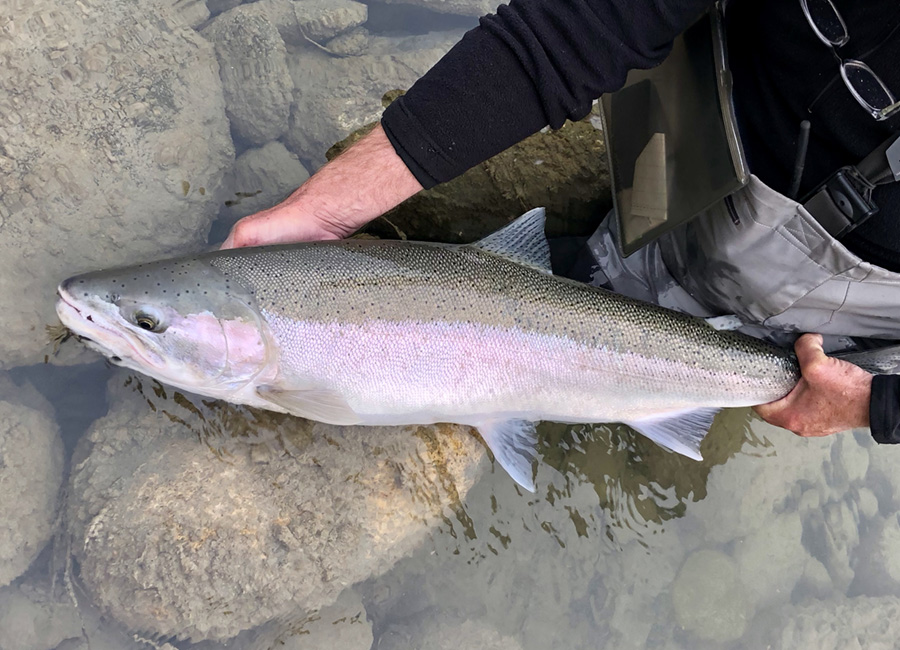It’s Wednesday’s Wild and Wet Winter … a CalTrout, Keepemwet Fishing and Lost Coast Outfitters initiative celebrating California’s wild winter steelhead.
High and turbid winter flows, especially during migration and spawning, make it difficult to accurately assess Northern California’s winter steelhead population. The optimistic estimate is less than 20,000 fish, a mere 10% of historic annual levels, ranging from just north of the SF Bay Area to the Oregon border.
With fewer fish and steady, if not increasing, angling pressure, it’s imperative that we learn how to handle fish carefully and minimize our angling impact on wild fish.
Odds are, if you’re a winter steelhead fly fisherman, you’re also a dedicated catch and release angler. Today there is a small but growing body of scientific research into the impact of catch and release angling not only on mortality, but also on post-release impacts on things like spawning and behavior. And, while little research to date has focused specifically on steelhead, we can extrapolate some generalities from research on other salmonids.
So a few things to keep in mind:
Releasing a steelhead and watching it swim away doesn’t necessarily mean the fish is in optimal shape. And, while that fish is likely to survive, our collective impact is not zero. It’s generally accepted in the angling community that bait is the most effective method to catch a steelhead, followed by lures which in turn are more effective than flies. It’s generally accepted in the scientific community that mortality rates for bait caught fish are higher than lure caught, which in turn are higher than fly caught fish.
A summary covering a number of steelhead mortality studies published in 2002
assumes the following mortality rates: bait 10%, lure 3% and fly 1%.
These differences are primarily driven by how frequently a fish is deeply hooked, and make sense when you think about how a fish eats a bag of roe versus takes a fly.
A recent study on British Columbia’s Bulkley River wild steelhead showed a survival rate three days post-capture at 95.5%.
This study also demonstrated that fish held out of the water for ten seconds or more
suffered impaired equilibrium and an immediate downstream movement compared
to fish kept in the water. Learn more about the research here.
If you’re lucky enough to come across a wild winter steelhead this season, please consider keeping your fish in the water, minimize (if not eliminate) air exposure, and handle the fish carefully.
------------------------------------------------------------------------------------------------------------
CalTrout: to learn more about California winter run steelhead
Keepemwet Fishing: to learn more about Keepemwet priniciples
Lost Coast Outfitters: blog on many things fly fishing related

